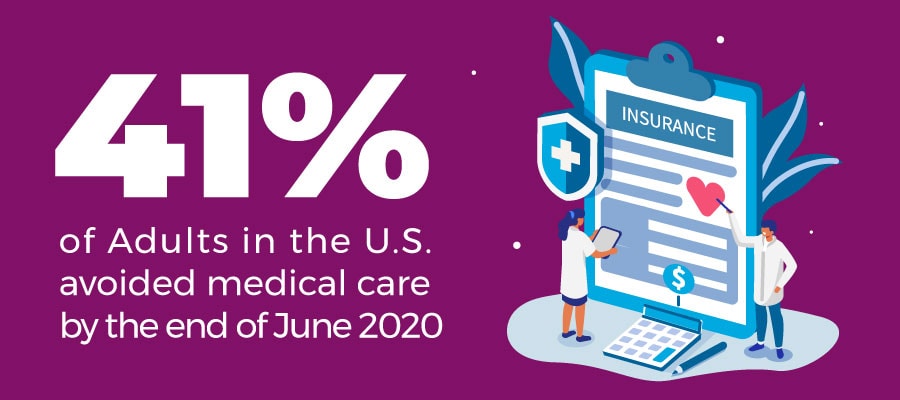The Impact of COVID-19 on Individuals with Diabetes
The coronavirus pandemic has increased the mental and physical burdens for individuals with underlying health conditions, such as diabetes. As a result of COVID-19, routine doctor visits were converted to telemedicine, and outings to have routine tests, such as getting blood drawn, became risks for exposure.iv Due to this, routine lab testing volumes have plummeted by approximately 60% as patients put off carev, while COVID-19 has increased lab testing demands by nearly 25 percent.vi
People with diabetes have a high risk of becoming seriously ill when infected with SARS-CoV-2. Not being able to get HbA1c levels tested has an adverse impact on patients with diabetes, where regular HbA1c testing is needed to control glucose levels and prevent diabetes complications. Also, well-controlled glucose levels may prevent severe cases of COVID-19.vii
Routine Testing During COVID-19
According to the CDC, an estimated 41% of U.S. adults had delayed or avoided medical care, including urgent or emergency care (12%) and routine care (32%) by the end of June 2020viii (Figure 1).

Delaying or avoiding needed medical care likely increases morbidity and mortality associated with chronic and acute health conditions, including patients who have type 2 diabetes or are pre-diabetic who benefit from HbA1c testing, one of the most robust tests we have to assess, diagnose and manage diabetes.ix Lack of testing for diabetes is also detrimental for COVID-19 outcomes for patients who have diabetes. Screening asymptomatic patients to detect prediabetes and initiate lifestyle changes has the added benefit of reducing the risk of adverse events if a person gets COVID-19.x
Get Automated. Get Ready.
As the pandemic rages and testing volumes increase, laboratories have an opportunity to deliver high-quality results more cost-effectively and efficiently with automation, which can help to address staff shortages while enabling resources to focus on high-value clinical tasks. There is strong evidence that an efficient Total Lab Automation model can successfully lower laboratory diagnostics costs while decreasing congestion in laboratories and improving efficiencyxi — which is exactly what labs of all sizes will need after the pandemic to deal with the increase in testing volumes. Laboratories are continually striving for shorter TAT and less instrument downtime. This is why laboratories need to dust off the instruments and the backup instruments that may not have been in use during the pandemic and ensure that they are in mint condition — with completed validation and quality control.
For three ways your laboratory can prepare to be strong enough post-pandemic, check out our recent feature on Medical Laboratory Observer (MLO).


 English
English









